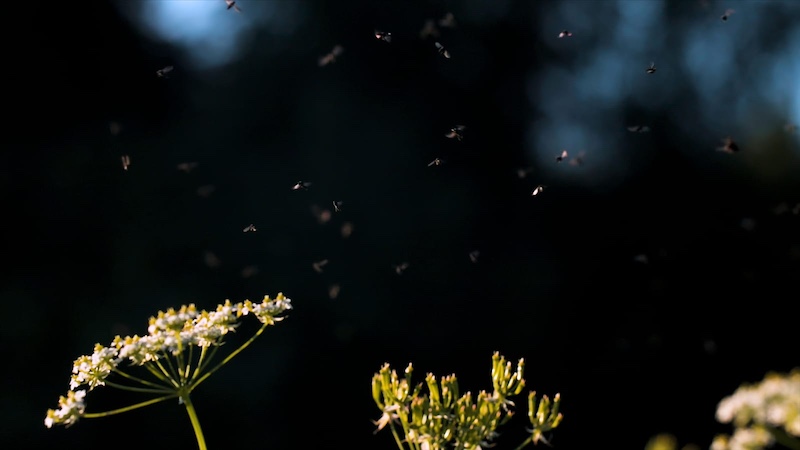Plants are the perfect touch to bring life and color to any space. But, just when you think you’ve got everything right, you start noticing those pesky little gnats flying around. You’ve nurtured your plants, watered them, and given them the perfect spot by the window, but why in the world are these tiny, annoying creatures hanging out?
Don’t worry, you’re not alone, and I’m here to help you understand why these tiny intruders are suddenly so interested in your lovely greenery.
What’s the Deal with These Gnats?
First things first—let’s talk about these little troublemakers. If you’ve noticed tiny black flies buzzing around your plants, you’re likely dealing with fungus gnats. These little guys aren’t harmful to your plants directly, but they sure do love to hang out where the conditions are right—namely, moist, decaying organic material.
The adult gnats are the ones we see flying around, but it’s their larvae that are really the culprits. These larvae love to feast on the roots of your plants, and while they won’t usually cause major damage, they can stress your plants out, making them more susceptible to other issues.
Why Are They Here?
Okay, so why are the gnats suddenly loving your plant life? It comes down to a few key things they love, and unfortunately, they’re all things you’ve likely been doing to keep your plants happy!
- Overwatering: Fungus gnats thrive in damp environments. If you’ve been a bit too generous with your watering routine, you’re providing the perfect breeding ground for these tiny invaders. The moist soil creates a haven for their larvae, and suddenly, your plants are the hottest party in town—gnats invited, of course.
- Decaying Organic Matter: Fungus gnats don’t just love moist soil—they’re also attracted to decomposing organic matter, like fallen leaves or bits of rotting roots. If your plant’s soil has too much debris, it’s like setting out a buffet for these little pests. The gnats are all about a free meal, and your plants might just be their favorite restaurant.
- Poor Drainage: If your plant pots don’t have good drainage, you’re setting yourself up for a gnat invasion. Water can pool at the bottom of the pot, keeping the soil too wet for too long. This stagnant water creates the perfect breeding ground for the gnats, allowing them to lay eggs and hatch their larvae without any hassle.
- Lack of Air Circulation: Plants like a bit of airflow, and so do gnats. If your plants are stuck in a spot with little ventilation, the humidity can linger longer, keeping the soil moist and the gnats happy. Plus, without a breeze to disturb them, the gnats have all the time in the world to breed.
How to Get Rid of Them (Without Losing Your Cool)
So now that you know why your plants have become a hot spot for gnats, let’s talk about how to kick them out without getting too stressed. The good news is, they’re usually easy to manage if you tackle the problem head-on.
- Dry Out the Soil: One of the best ways to deal with gnats is to let the soil dry out between waterings. Fungus gnat larvae need moist soil to thrive, so giving your plants a little breather from the water will help reduce their numbers. Just be sure not to let your plants completely dry out—they still need a little hydration!
- Improve Drainage: Make sure your plant pots have drainage holes to allow excess water to escape. You might even want to consider repotting your plants with a better-draining soil mix if the current one holds onto moisture too long.
- Sticky Traps: Those little yellow sticky traps are a great way to catch adult gnats and keep their numbers in check. Place a few around your plants, and soon you’ll notice fewer of them buzzing around. It’s a low-tech solution that works like a charm.
- Neem Oil or Insecticidal Soap: If you’re looking for a natural way to keep the gnats in check, neem oil or insecticidal soap can help. Just be sure to follow the instructions carefully, as you don’t want to harm your plants in the process.
- Hydrogen Peroxide Solution: A mixture of one part hydrogen peroxide to four parts water can be poured over the soil to kill the larvae without harming your plant. This is a great way to break the gnat life cycle and put an end to the issue.
Preventing Future Gnat Invasions
Once you’ve got the gnats under control, it’s important to take steps to prevent them from coming back. Here’s a tip from the expert side of things: Keep your plants’ soil healthy by not overwatering and making sure there’s proper drainage. The fewer opportunities for the gnats to breed, the less likely they’ll come knocking again.
In the end, gnats are just a minor inconvenience in the world of plant care, and with a little attention, you’ll be able to enjoy your green space gnat-free. Happy gardening, and may your plants—and your home—stay gnat-free!
